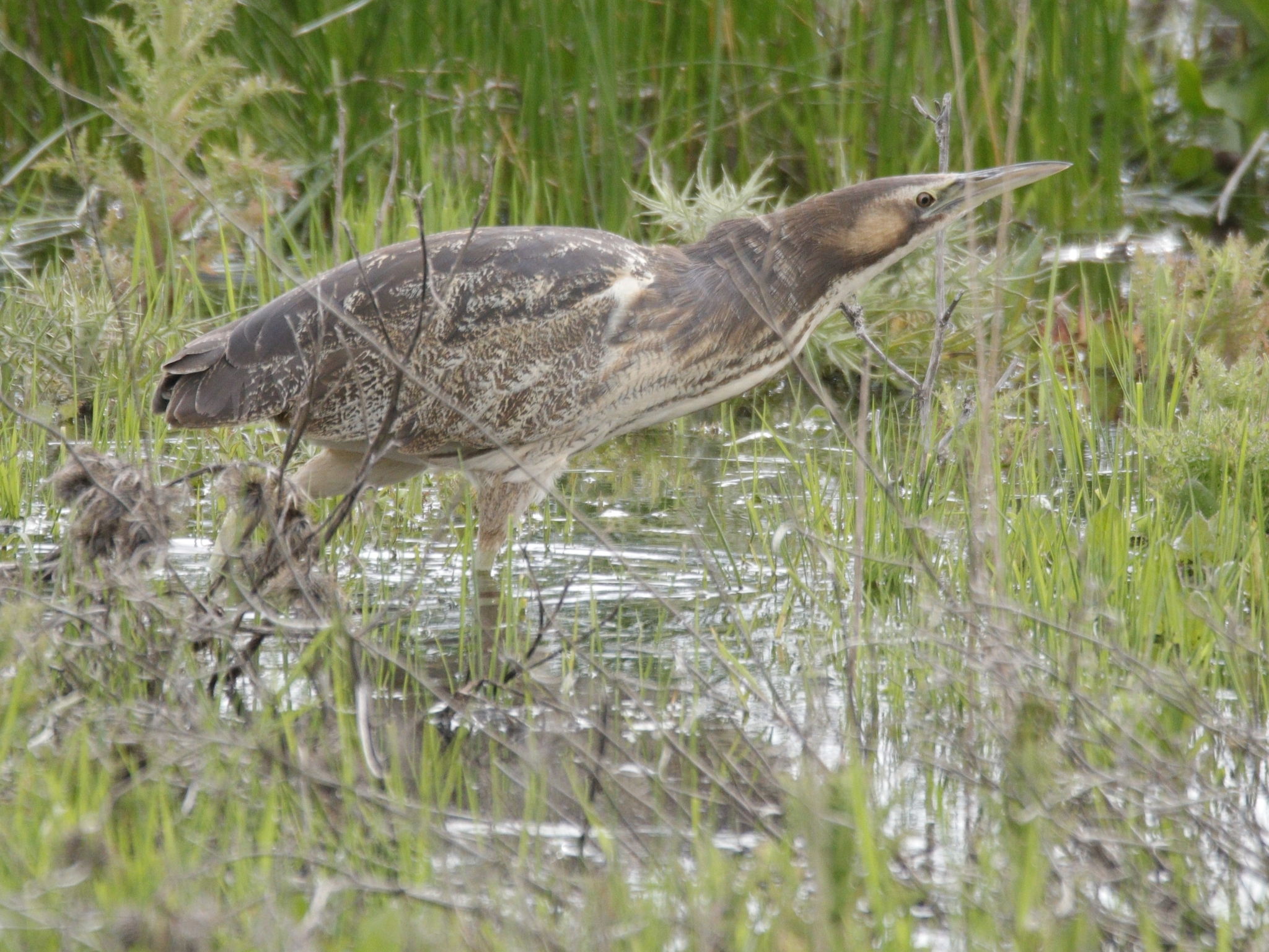Elected representatives in government are in charge of the policy and funding that can make or break saving threatened species. Their decisions and actions matter.
Lyne has or used to have 30 threatened animals within its boundaries. One of them is me, the Australasian Bittern.
We took care to attach appropriate images that are as close to representative of each species as our resources and the availability of images allowed. However, we could not ensure perfect accuracy in every case. Some images show species that share the same genus but not at the species or subspecies level.
Australasian Bittern
Botaurus poiciloptilus
Status: Endangered
The Environment Protection and Biodiversity Conservation Act 1999 (EPBC Act) lists threatened species under six categories:
Extinct, Extinct in the wild, Critically Endangered, Endangered, Vulnerable, Conservation dependent. Read more about these categories
Botaurus poiciloptilus is found across 145 electorates.
The Australasian bittern is a secretive, stocky, heron-like bird, living in wetlands where it forages. Bitterns are very well camouflaged and can be difficult to spot in the reeds and rushes. On occasion they will even sway in time with reeds to blend into their surroundings. The distinctive booming call of males gives them away.¹
Explore more about this species on the Atlas of Living Australia





Explore more about the threats facing species on our Resources page.
- Three Brothers Wattle (Acacia courtii)
- Scented Acronychia (Acronychia littoralis)
- Dwarf Heath Casuarina (Allocasuarina defungens)
- Nabiac Casuarina (Allocasuarina simulans)
- Allocasuarina thalassoscopica (Allocasuarina thalassoscopica)
- Charmhaven Apple (Angophora inopina)
- Hairy-joint Grass (Arthraxon hispidus)
- Trailing Woodruff (Asperula asthenes)
- Thick-lipped Spider-orchid (Caladenia tessellata)
- Callistemon pungens (Callistemon pungens)
- Pygmy Cypress-pine (Callitris oblonga)
- Dwarf Kerrawang (Commersonia prostrata)
- Tuncurry Midge Orchid (Corunastylis littoralis)
- Leafless Tongue-orchid (Cryptostylis hunteriana)
- White-flowered Wax Plant (Cynanchum elegans)
- Bluegrass (Dichanthium setosum)
- Diuris eborensis (Diuris eborensis)
- Pale Yellow Doubletail (Diuris flavescens)
- Newcastle Doubletail (Diuris praecox)
- Veined Doubletail (Diuris venosa)
- Slaty Red Gum (Eucalyptus glaucina)
- Craven Grey Box (Eucalyptus largeana)
- Earp's Gum (Eucalyptus parramattensis subsp. decadens)
- Euphrasia arguta (Euphrasia arguta)
- Grevillea guthrieana (Grevillea guthrieana)
- Small-flower Grevillea (Grevillea parviflora subsp. parviflora)
- Hakea archaeoides (Hakea archaeoides)
- Tall Velvet Sea-berry (Haloragis exalata subsp. velutina)
- Macadamia Nut (Macadamia integrifolia)
- Clear Milkvine (Marsdenia longiloba)
- Biconvex Paperbark (Melaleuca biconvexa)
- Milky Silkpod (Parsonsia dorrigoensis)
- Knotweed (Persicaria elatior)
- Nightcap Plectranthus (Plectranthus nitidus)
- Rufous Pomaderris (Pomaderris brunnea)
- Villous Mintbush (Prostanthera densa)
- Illawarra Greenhood (Pterostylis gibbosa)
- Eastern Underground Orchid (Rhizanthella slateri)
- Scrub Turpentine (Rhodamnia rubescens)
- Native Guava (Rhodomyrtus psidioides)
- Ravine Orchid (Sarcochilus fitzgeraldii)
- Solanum sulphureum (Solanum sulphureum)
- Magenta Lilly Pilly (Syzygium paniculatum)
- Fragrant Pepperbush (Tasmannia glaucifolia)
- Black-eyed Susan (Tetratheca juncea)
- Austral Toadflax (Thesium australe)
- Tylophora woollsii (Tylophora woollsii)
- Willi Willi Zieria (Zieria lasiocaulis)
You are in federal electorate Lyne.
